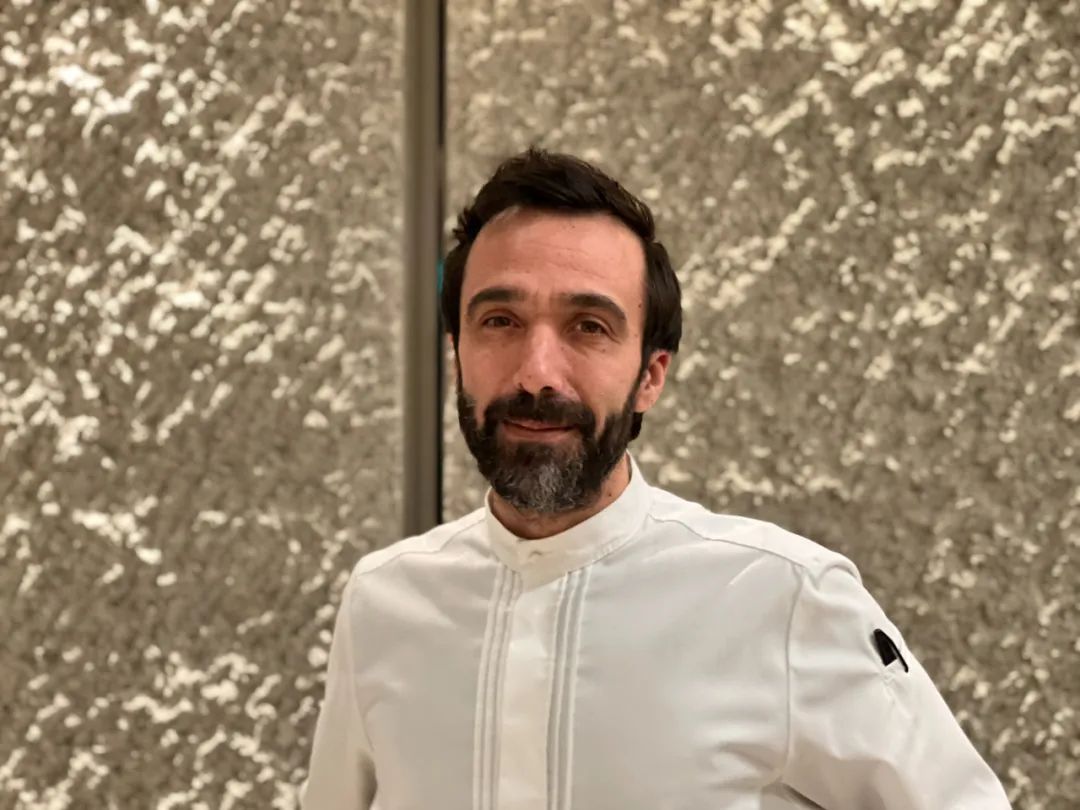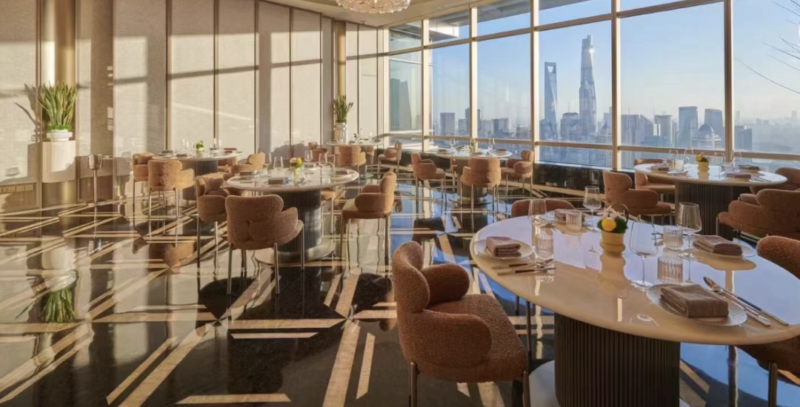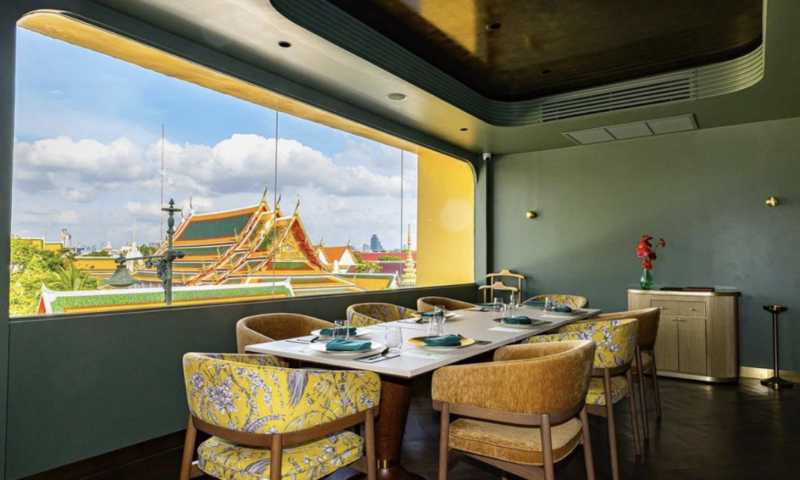“Coming to Japan was not part of the plan,” says Chef Lionel Beccat at the French restaurant Esquisse in Tokyo. Chef Beccat was born in Corsica but moved to Marseille with his family at the age of four. As a major port on the Mediterranean coast, the city of Marseille is a fascinating multi-cultural melting pot in its own right. “Marseille defines who I am,” he says, with a calm, slightly melancholic temperament but his eyes shining stars of wisdom.

Beccat was the second chef when he was working at the three-starred La Maison Troisgros in France. During the five years there, Chef Michel Troisgros trusted him for his professionalism and his sense for food. Later on, Troisgros recommended him to work at another three-starred restaurant Daniel Boulud in New York. Like many young people eager to chase the American Dream, Beccat had opportunities to go to New York and San Francisco and was excited to continue pursuing his professional career in either one of the metropolises. In 2006, Michel Troisgros decided to open his first overseas branch in Tokyo, asking Beccat to run the new restaurant. “I was given 24 hours to think,” Beccat recalls. He rose to the challenge and went to Tokyo.
It was only when he decided to open Esquisse that he realised it might be much simpler to be a chef working at a well-established, Michelin-starred French restaurant. Freedom is empowering, but it also makes people lost. He decided not to use any of Troisgros’ recipes. It took him two years of trial and error to figure everything out, but the fire burning in his heart eventually helped him find his own style.


“Now if I look back, Japan changed the way I looked at the world,” he says. Many Japanese philosophies like wabi-sabi, have taught him to see the development of things on a different level, to appreciate beauty and meaning in life. In his book he writes about the driving force behind each dish instead of cooking techniques, because he believes that everyone is different and cannot be easily defined by others. He also shares the process that inspires each of his creations in the hope that it will help people find their own path.


langoustine | cidre | egoma
Beccat says Japan changed his ability to listen, allowing his sensory radar to better capture what’s said and what’s left unsaid, and to discover the beauty of silence when living with a culture emphasizing subtlety in conversations. He is willing to teach all the techniques to his students, but finding out why these are important is the thing they need to figure out themselves.
His confidence comes from knowing who he is, what he is doing, what he is capable of, and affirming his desire to serve others. He thinks there is no need to cling to what has been lost, rather, be grateful for what is left behind and not to be too dependent on particular people or things. Keeping an open mind is the key to personal growth.
Apart from his background and Japanese philosophy, photography also plays a great part in shaping his style of cooking. Beccat believes that cooking and photography are the same – they both require skill, vision, materials, awareness, feeling, passion, and luck. The only difference is that photography stays forever, but food will vanish. He does not see photography or cooking as art; both are craft. People decide if it’s art or not. For Beccat, photography and cooking interact with him and strengthen the ties with the world people live in. He says doing photography allows him to return to himself and regain control of things.



In Beccat’s mind, all experiences are a process, not an answer. If someone said his dishes are Japanese cuisine then he would just accept that, because he doesn’t know what his cuisine is and he doesn’t want to know. Everyone has their own answer.The evolution is fully reflected in his menu. “Mental gymnastics keeps you fit and always aware of new things,” he says. With constant stream of artistic inspiration, he hardly ever makes the same dish. After six weeks, the menu will be brand new again. I asked him if he could name three dishes that he keeps on the menu.

One of the three is a cheese dish – Taste is Word – made with kombu, mascarpone, Comté, truffle and sake. The blank space in plating gives a sense of tranquillity, as if watching the Moon and the Earth living in symbiosis in the universe.
Beccat says he was forced to keep this dish at the request of the guests because it is easily taken as a cheating dish. It’s easy to jump in on a popular trend. “Everyone can cook strong flavours, but real taste has to be natural,” he states.

Peace of Mind was created during the initial outbreak of covid. “Fear of doing too much or not enough, fear of being judged, fear of being misunderstood. Three months away from cooking taught me that the real fear, the absolute anguish, is not able to cook again. So since then I’ve done absolutely anything I want to do. I’ve wanted to make it for years but didn’t dare, a tomato pie.” The ingredients are organic cherry tomatoes marinated in mustard oil, fennel seed paste, pissalat, goat cream, candied red peppers, tomato water, Barolo aged vinegar and herbs. It looks simple but requires complex process and is very time-consuming.
Eurythmy of Living is a fish dish. It means right and harmonious movement or happy and balanced arrangement, often used to describe the beauty of a dancer’s gesture or the energy of the light in photography or painting. This dish depicts the energetic harmony of spring that wraps us and pays tribute to the living by including the sensation of movements. It features sawara lacto-fermented in bergamot sour milk, broad beans puree, pine gable tahina, brined cucumber, fresh green peas with parsley oil, burrata, shell bouillon and bergamot paste as a sauce.


It has been three years since I last visited. The February menu is absolutely a stunning masterpiece. The first dish starts with shredded green apple and wasabi leaves wrapped in halibut aged for 4 days. It was a real treat for the palate, like a symphony exuding Japanese elegance and French flair. The main course – amadai is steamed to reduce rawness, retaining its freshness and tender texture. The sauce is made from fish stock with a touch of bergamot butter to give it some power, further garnished by the slightly bitter fuki in spring. Respecting the original flavour is a perfect way to describe the dish. The duck is tender, precisely cooked to produce a toffee-coloured crispy skin that cracks into caramelized shards. The red wine sauce is bright and not too heavy, served with aromatically seared parsnip. Delicious and elegant.



amadai | fukinoto | bergamote
canard | panais | vin rouge
Esquisse, meaning “sketch” in French, is more than a name. An artistic theme runs throughout Esquisse, from the bright and airy decor through to the elegant presentation that seems to bear the poetic come and go of things.
Opened in Tokyo’s luxury Ginza district in 2012, Esquisse was awarded two Michelin stars five months after opening. Deeply influenced by Japanese philosophy, Lionel Beccat’s cooking is about changing the way of thinking and creative growth, leaving guests to define his dishes. For me, Esquisse is undoubtedly one of the iconic restaurants to visit in Tokyo.
-END-
文字: Jocelyn 华姐
图片: Jocelyn 华姐/instagram











